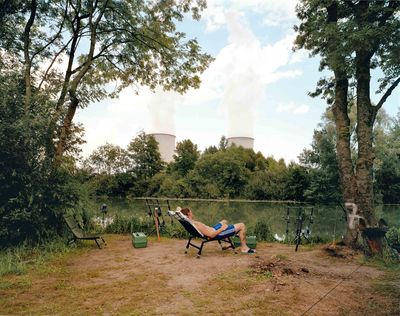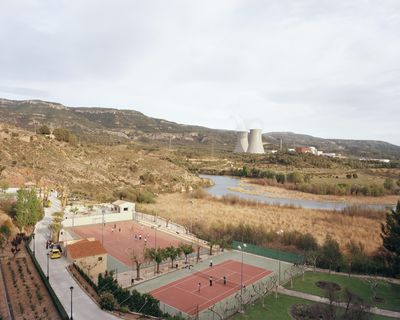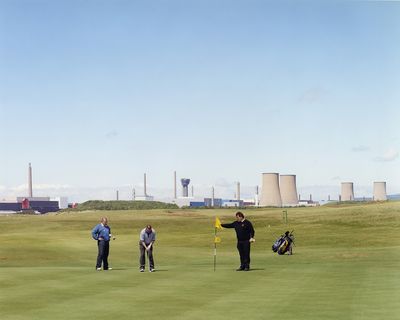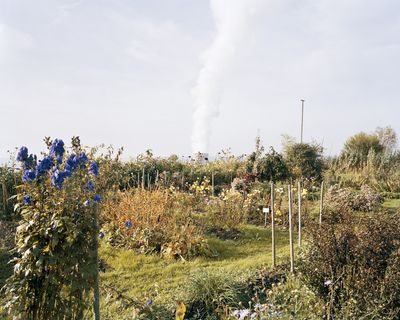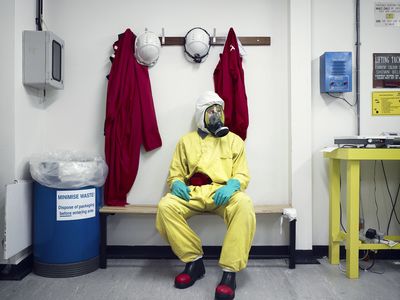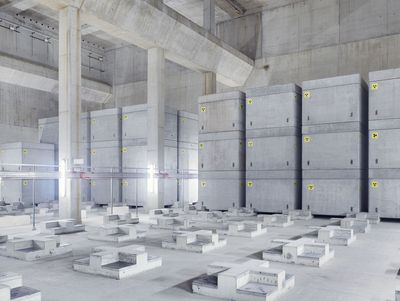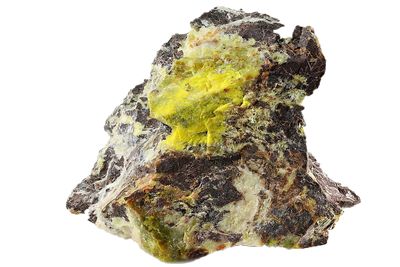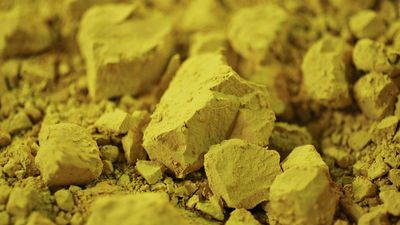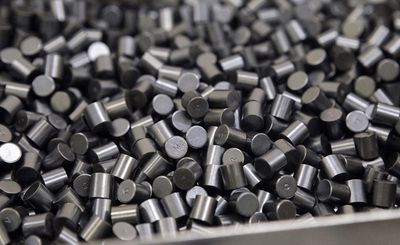AtlasNuclearElla Bacchetta, Elisa Nadas, and Silvano Ursella
Nuclear energy is produced by a neutron that generates a large amount of energy through a fission reaction. This process has the great advantage that no direct CO2 emissions are produced. For this reason, nuclear energy has been considered by some scientists in recent years to be “renewable” energy, or at least safe and environmentally friendly.
However, nuclear fission produces extremely hazardous, long-lived radioactive waste. It has to be stored depending on its radioactivity. To date, we have not found a solution for long-term radioactive waste other than storing it in deep tunnels 500 metres below sea level and leaving this poisoned gift to future generations. Moreover, the risks of nuclear incidents cannot be excluded. Another problem that must be considered is the harmful impact on fauna and flora caused by the water used to cool the reactor. In 2011, the Bundestag voted by a large majority to phase out nuclear power by 2022. However, due to the war in Ukraine and the energy crisis, it was decided to postpone the nuclear phase-out date until October 2022. So what does the future of nuclear energy look like?
Nuclear Power Plants in The Landscape
Nuclear powers plants are implanted in the landscape, almost like a scenic object. The shape of the cooling chimneys has become an icon and can give rise to various reactions. Some are fascinated by their shape, others are frightened by them and see in these clouds of smoke the risk of long-lasting radioactive waste and nuclear incidents. It is in these multiple reactions that one can feel the tensions and the visions that differ concerning the future of nuclear power. But what is really happening behind these enclosed sites ?
It All Starts with a Neutron
The nuclear reactor is driven by the splitting of atoms, a process called fission, where a particle, a neutron, is fired at an atom, which then fissions into two smaller atoms and some additional neutrons. Some of the neutrons that are released then hit other atoms, causing them to fission too and release more neutrons. This chain of fission of uranium atoms is what releases the large amount of energy as heat.
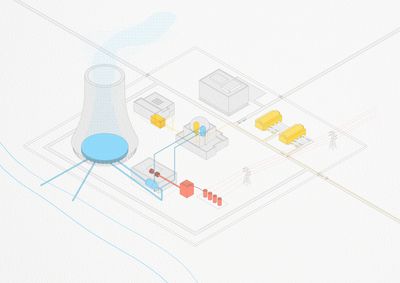
THE INFRASTRUCTURE OF A NUCLEAR POWER PLANT
- Uranium journey
- Water circuit
- Electricity
Trucks bring uranium fuel pellets to the nuclear power plant site where they are stored in sheds until they are brought to the reactor to produce heat through the previously explained fission reaction.
The generated heat is removed from the reactor by water. This heat is then used to generate steam, which drives turbines for electricity production. The steam that makes the turbines turn is then cooled down by another circuit before going back to the reactor again, forming a closed circuit.
The cooling water circuit is composed of a cooling tower that has a water pool inside, filled up with water taken in rivers. Five percent of the water evaporates while ninety five percent goes back into the river.
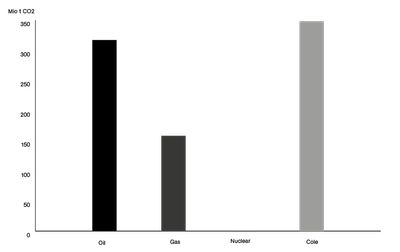
Source: Statista.
In the entire electricity generation of a nuclear power plant, therefore, no CO2 is emitted. This is a major advantage of nuclear power generation compared to other fossil fuels. So how is it that nuclear energy is so heavily criticised?
How Clean Is Nuclear Energy?
The radiation hazards for employees, the surrounding population and the damage to the environment in the event of a nuclear incident as well as the question of short and long term storage are the biggest challenges resulting from nuclear energy production. Today, no satisfactory storage solution has yet been found for the longest-lived waste, that can last up to 2 million years.
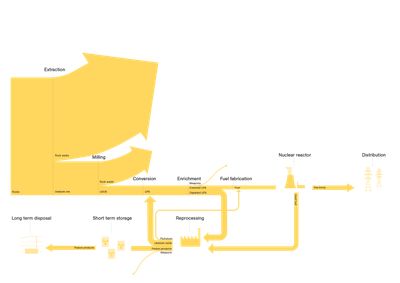
Source: World Nuclear
It all starts with the mining of uranium, a naturally radioactive metal. Once the earth is extracted the uranium ore can be isolated and crushed into a powder. It is then leached in sulfuric acid to allow the separation of the uranium from the waste rock. This powder is also referred as “yellow cake.” This product is not directly usable in a reactor, only seven percent of natural uranium, the U-235 isotope, is capable of undergoing fission. In order to make it into a fuel, the uranium oxide is first refined to uranium dioxide through the process of conversion.
After it’s been converted it can be enriched to isolate the U-235 isotope. It is crushed into a powder and molded in the form of pellets. The pellets are inserted into thin tubes known as fuel rods, which are then grouped together to form fuel assemblies. The fuel normally stays in the reactor core for several years.
After that, the used fuel goes into a reprocessing plant to separate it into different waste. Some of it can be reused in the previous processes and the most radioactive one, the fission product, needs to be cooled down and stored in a very protected space.
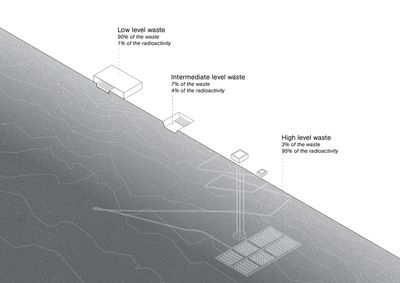
Source: World Nuclear
The waste is stored according to its level of radioactivity and of its half-life, the time taken for the radioactivity to fall to half its original value.
Most of the low level waste comes from the operation and decommissioning of nuclear facilities. The waste includes items such as scrap metal, paper and plastics. About ninety percent of the radioactive waste is in this category but only one percent of the total radioactivity of the wastes.
The intermediate level waste have a longer half life than the low level waste. The major components are the nuclear reactor parts and graphite from reactor cores. It needs to be stored for a longer time in an intermediate disposal.
The fission product is the most radioactive waste produced by the power plant. High level waste is characterized by its high radiation level but it also requires a special handling due to all the heat that it releases. It represents about three percent of wastes but it is ninety five percent of the radioactivity. Beyond storage in dry casks, many options have been investigated. The most realistic solution is deep geological disposal until the level of radioactivity decreases over time. Some of the waste would have to stay thousands of years underground and we could ask ourselves how to communicate it to the next generations.
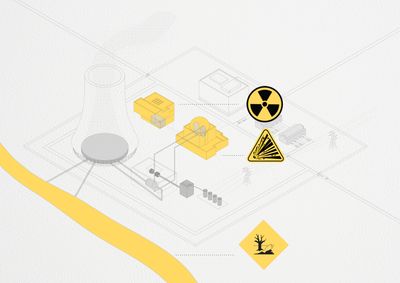
The water that is used to cool the reactor circuit is then poured in the rivers again but it is hotter than when it enters the power plant site. This difference of temperature has negative consequences on the flora and fauna of the. It causes the extinction of some of the fishes that can’t adapt to this heat. High temperatures also favour the development of algae that consume a lot of oxygen to the detriment of other organisms, which end up dying of asphyxiation. Moreover, the risk is also sanitary since the heating of the water by the power plants could lead to the development of bacteria, such as legionella species for example, a source of contamination of rivers.
There are a series of issues that can lead to dramatical nuclear incidents, rather caused by natural disasters as in Fukushima or by human mistakes in Tschernobyl. In Fukushima, for example, the loss of external and internal alimentation led to the explosion of the reactors and an overheating of the temperature of the waste pool. The emergency of the situation resulted in a high quantity of gaseous and liquid radioactive effluents.
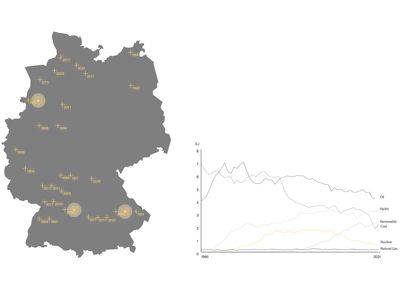
Source: Clean Energy Wire
These two documents illustrate the phenomenon of decommissioning of nuclear power plants in Germany in recent years, a phenomenon that started in 2006, following the implementation of the Shroeder plan by Angela Merkel. Today, only three nuclear plants are still in operation in Germany. The decommissioning date for these was set for 2023. However, due to the energy crisis this date has been postponed by one year.
The History of Nuclear Energy: Between Warfare and Clean Energy
The history of nuclear power generation has been a double edged sword from the very beginning. On the one hand, a lot of electricity could be generated for the people, not entirely without dangers, but on the other hand, the energy from uranium was used in parallel for military purposes.
1942
The start of the Manhattan project.
Research and development of the first nuclear weapons.
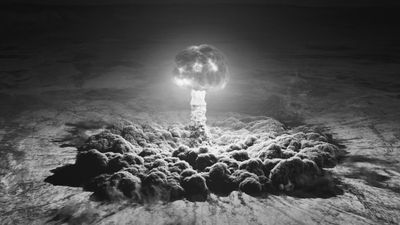
Source
1945
The Trinity test, the first detonation of a nuclear weapon.
Atomic bombs dropped on Hiroshima and Nagasaki.

Source: Encyclopedia of Forlorn Places
1951
In the USA the first electricity-generating nuclear power plants was invented, the Experimental Breeder Reactor I.
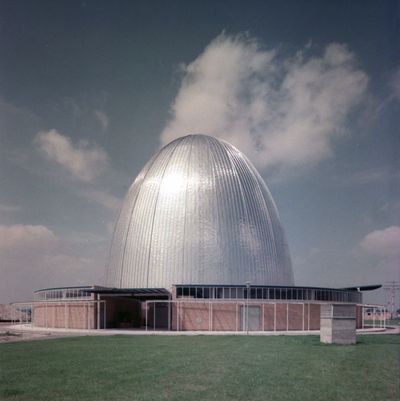
Source: Lebendiges Museum Online
1957
The First German nuclear research reactor in Garching.
1962
Kahl nuclear power plant with a capacity of 15 MW feeds electrical power from nuclear energy into the German supply grid for the first time.
1973
The first oil crisis accelerated the planning of nuclear power plants.

Source: Regionalverband Südlicher Oberrhein
1974
Occupation of the Wyhl nuclear construction site for several months by approx. 28,000 demonstrators.
1979
About 100,000 people demonstrated in Hanover when the Gorleben train with nuclear waste arrived.
The largest German demonstration of that time with around 100,000 participants took place in Bonn against nuclear power.
1980
The German party die Grünen was founded.
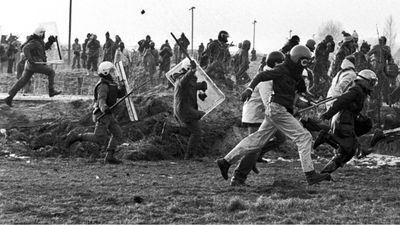
Source: Deutschlandfunk Nova
1981
Around 100,000 people demonstrate against the continued construction of the Brokdorf nuclear power plant.
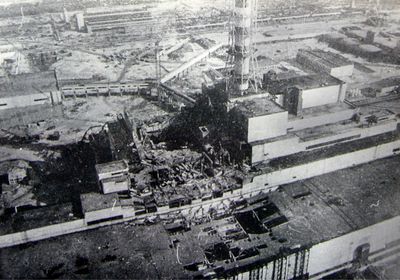
Source: Pinterest
1986
Tschernobyl, the nuclear disaster in Ukraine revitalised the German anti-nuclear movement.
2000
Beginning of the nuclear exit with the Atomkonsens: Germany wants to take the last nuclear power plant off the grid in 2021.
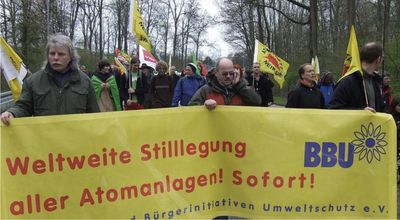
Source: Aachener Zeitung
2010
The Bundestag approved an extension of the operating life by 8 and 14 years respectively.
That led, among other things, to a Demonstration in Jülich against nuclear power.

Source: Open Source Investigations
2011
A nuclear accident happened at the Japanese Nuclear Power Plant.
The Bundestag votes with a large majority in support of the nuclear phase-out till 2022.
2012
First demonstration at the Hambacher Forst.
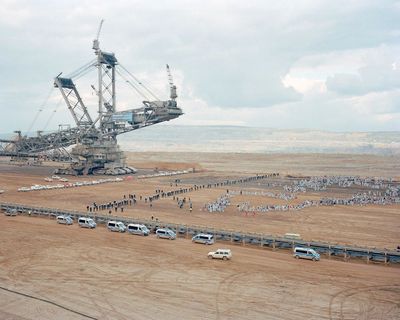
Source: Ende Gelände
2015
The first Ende Gelände action took place, followed by annual actions against lignite mining.
2022
Only three nuclear power plants are still active in Germany.
In Lüzerath demonstrations against lignite mining take place.
Because of the energy crisis, the decommissioning of the last three nuclear power plants is postponed by one year. It is now scheduled for 2024.
